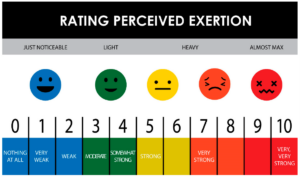Regular physical activity is recommended for people with asthma, but it is also a common trigger for asthma symptoms.
Our third webinar in the series of three was held on Wednesday 5th October and was presented by Ms Janet Bondarenko, a senior respiratory physiotherapist at the Alfred hospital.
How to Breathe Better During Exercise
With Janet’s help, we have compiled some common questions you may have about breathing during exercise, along with Ms Bondarenko’s answers, below.
We’ve kept this Q&A to questions to do with breathing whilst exercising and breath retraining. If you had a question about asthma that wasn’t answered here, please call our Asthma Educators on 1800 ASTHMA (1800 278 462). Please consult your doctor for information about your asthma and exercise. Consider asking your doctor for a referral to an exercise physiologist/physiotherapist or local pulmonary rehabilitation to help you.
Your heart rate can be affected by some asthma medications like your reliever. It might be best to use rate of perceived effort (RPE) if relievers are used prior to exercise to manage exercise induced symptoms of asthma.


Sometimes it might be better asking yourself “How does this intensity feel for me?”.
Using the talk test is a simple and reliable way to measure intensity. As a rule of thumb:
- If you can talk and sing without puffing at all, you’re exercising at a low level.
- If you can comfortably talk, but not sing, you’re doing moderate intensity activity.
- If you can’t say more than a few words without gasping for breath, you’re exercising at a vigorous intensity.
Yes. Pilates helps you with awareness of each movement, using flowing movement patterns that are precise and steady using controlled breathing.
Pilates is a form of exercise and movement aimed to improve strength, flexibility, muscular control, body awareness and posture. It is slow, gentle on the joints and low impact. Pilates offers a balance between stretching and strengthening exercises. Stretching the muscles that most often tighten as a result of our lifestyles and strengthening those that are more often weak. Pilates also helps with postural improvement and deep core.
Breathlessness from exercise should ease once you stop. Breathlessness from an asthma attack won't.
Consider pacing your exercise using planned intervals and intensity, and if your breathlessness doesn't go away, see your doctor.
Sometimes the sensation of breathlessness differs between exercise and having an attack. People often describe their breathlessness as feeling like it required muscle 'work' with exercise, rather than chest tightness (often associated with an attack), but this can differ between people
Consider contacting an asthma educator to explore this more fully and talk with your doctor.
Your diaphragm moves down when you breathe in - causing your tummy area to rise or expand.
Look for the section on Stomach Breathing on our web page here.
Your doctor would usually advise you to use your reliever medication up to 15 minutes before warming up.
This should be on your Asthma Action Plan. More information on asthma and exercise can be found here.
TIP: Are you only using reliever such as Ventolin/Asmol to treat your asthma symptoms and you don’t use a preventer?
If you are having asthma symptoms twice a month or more or have any risk for flare ups, you should see your doctor to discuss whether a preventer may be needed.
- Wear a scarf or long necked collar to pull up over your mouth/nose to help warm, filter and moisten the air. Some people have found that mask-wearing has been beneficial.
- Warming up with mobility exercises performed prior to going outside
- Consider indoor activities as an option on some days
- Use preventer regularly as prescribed
Best to ask your doctor or specialist. If you are having an asthma 'episode', exercise is not indicated.
Yes. Leaning forward can help you breathe easier during an asthma attack.
It is also important to also follow your asthma action plan.
Yes. Contact your doctor to locate your local specialist, or use the Sports and Exercise Physicians website to search for local specialists: https://www.acsep.org.au/
No. Wearing a mask does not affect your oxygen (O2)or carbon dioxide (CO2) levels.
Your diaphragm makes up part of your 'core', as does your pelvic floor muscles. They work together with your deep abdominal muscles to support your spine. Stomach breathing will engage your core.
Ask your doctor about your recovery and treatment after an asthma flare up (exacerbation).
In general, during exercise, watch for asthma symptoms. Stop and take your reliever medication if symptoms appear. Only return to exercise if your asthma symptoms have gone away.
If asthma symptoms come back for a second time during exercise, take your reliever medication again until symptoms have been relieved. It is not recommended that you return to the activity.
Effectively, “two strikes and you’re out” rule.
After exercise, cool down as usual.
Remember, asthma symptoms can occur up to half an hour after exercise. Make sure you take your reliever medication if you have symptoms after exercise.
Try to exercise so you feel moderate breathlessness - to get 'fitter', you could add in short intervals (eg. 1 min) of higher intensity exercise (stairs, hill etc.) If your breathlessness continues, ask your doctor for advice.






